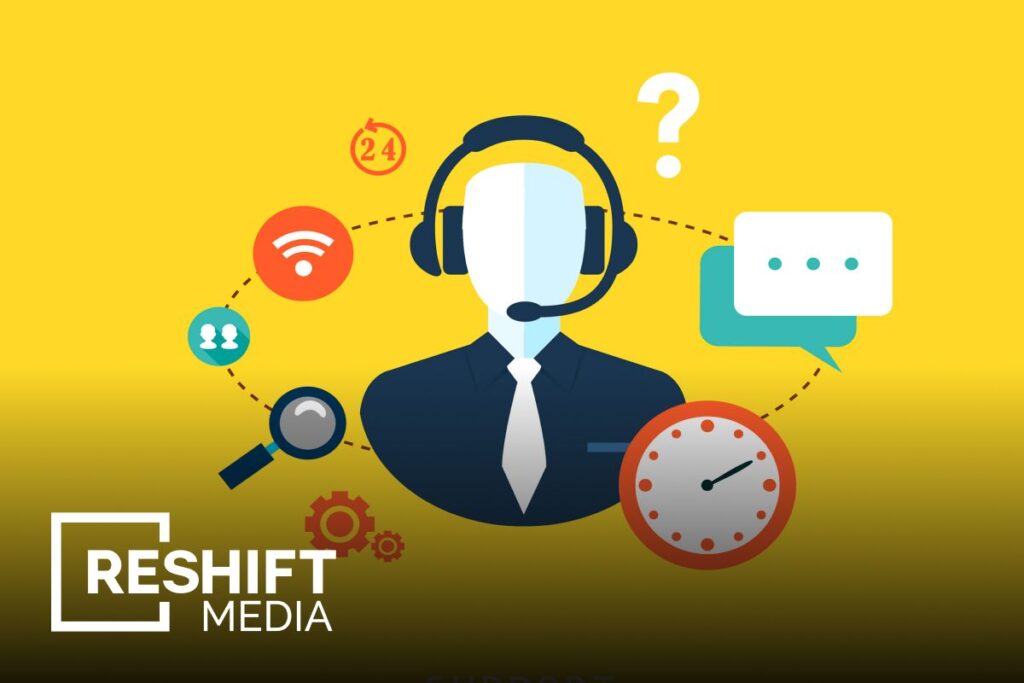What is Proactive Customer Service and How Will It Impact Retailers?
May 3, 2022
This article is provided by Reshift Media, a Canadian-based digital marketing and development organization specializing in retail businesses.
Retailers understand how instrumental the customer experience is. From the moment a consumer comes across your business to their first purchase and beyond, there are many factors that build up to a positive customer experience, One of the most impactful factor is customer service.
Think of customer service as running a marathon – on the other side of the finish line are customers who have had an outstanding experience while engaging with your business, but in order to get there, it requires much preparation to ensure needs are fulfilled, even before customers realize it’s a need. It is that preparedness and anticipation for what your customers may want or need that can help you provide an optimal experience as they engage with your business. Proactive customer service can help take your customer service standard to the next level while increasing customer retention and loyalty at the same time.
What is proactive customer service?
Aptly named, proactive customer service is very much focused on being proactive in the customer journey through customer service. This means you are the first one to reach out to the customer to offer a solution for an issue, fix an error or concern before the customer brings it up, or offer a service they didn’t consider that can be beneficial to improving their experience. Essentially, the goal here is to address a certain issue that a customer may have before they contact your customer service team.
An example of what this looks like could be a customer who purchased a sweater in a colour that just became back-ordered. Instead of letting the customer wonder where their purchase is and wait for an order email stating it’s on backorder, someone who is implementing proactive customer service would notice that the product is on backorder, promptly reach out to that customer, and offer them an update about their order or an option for a similar sweater that can be delivered right away. Another example could be informing your customers about an upcoming sale that they would be interested in before it is advertised to the general public. What is important is that their experience is optimal, and the onus is put more on the retailer to provide it right out of the gate.
Proactive customer service looks different depending on your industry, but what makes proactive customer service proactive is that your business is on top of your customers’ needs before a concern arises.
What is the difference between proactive and reactive service?
Although both forms of customer service, there are some differences between the two. While proactive service involves addressing customer concerns before the customer does, reactive service means reacting to or addressing the concern when the customer presents it to you. It’s all about who contacts who first.
It’s important to note that one is not necessarily greater than the other, and your customer service strategy should include both. There may be moments where a customer does reach out about a question or concern before your team notices, and your team will need to respond accordingly. Combining and strengthening both strategies can help ensure your customers are satisfied. This could involve your customer service team creating a toolkit that includes some of the best practices from both styles.
The impact of proactive service on customer service
To determine the impact of proactive service, it’s important to highlight some key statistics of this style in action. In a recent survey, 87% of customers who had a positive experience with proactive customer service led them to take positive action with the business. In the same survey, a whopping 92% said that being contacted proactively caused them to have a positive perception of the brand. Meanwhile, 83% said they want companies to contact them proactively.
As you can see, proactive customer service is very popular among consumers. However, this style of customer service also carries many benefits for the businesses that implement it as well. For instance, there is a reduction in customer calls requiring support, as proactive customer service communicates with customers first. As well, it can increase customer loyalty and retention rates as proactive customer service allow businesses to remain transparent, which consumers can appreciate, while also demonstrating to the customer that the business they are purchasing from is thoughtful of their needs.
There is also very much a personalization aspect of proactive customer service, as it involves the business reaching out to the customer. Personalization is very much an important aspect in retail, as consumers are 40% more likely to increase their spending when the shopping experience is personalized, and 91% say they are more likely to shop with brands that recognize, remember, and provide relevant offers/recommendations to them.
By reaching out to the customer before they reach out to you about their concerns or frustrations, you, as the retailer, are simplifying their experience. Throughout the pandemic, the retail industry has transformed, along with customer expectations. Customers have begun to prioritize convenience and speed. By offering proactive customer service, you are removing any chance for pain points to arise and improving the customer experience as a result. Going forward, customers will continue to expect a simplified retail experience, and proactive customer service can help with that.
Whether it be through implementing a mobile app that offers push notifications to customers with personalized information, retail kiosks to improve upon a more omnichannel experience for customers, AI-powered chatbots that can offer customer support in the moment, or sending out a newsletter with beneficial blog posts, finding ways to implement proactive customer service is key. A good way to start is to simply get to know who your customers are and what they are saying about your business through social media, a survey that you send customers, feedback, or reviews. This can help you better arrange a plan on how you and your team will address customers’ needs before they even realize it.
About Reshift Media
Reshift Media is a long-time partner of the Retail Council of Canada. The company is a Toronto-based digital marketing and development organization that provides leading-edge social media, search and website/mobile development services to retailers around the world. Please visit www.reshiftmedia.com to learn more.



